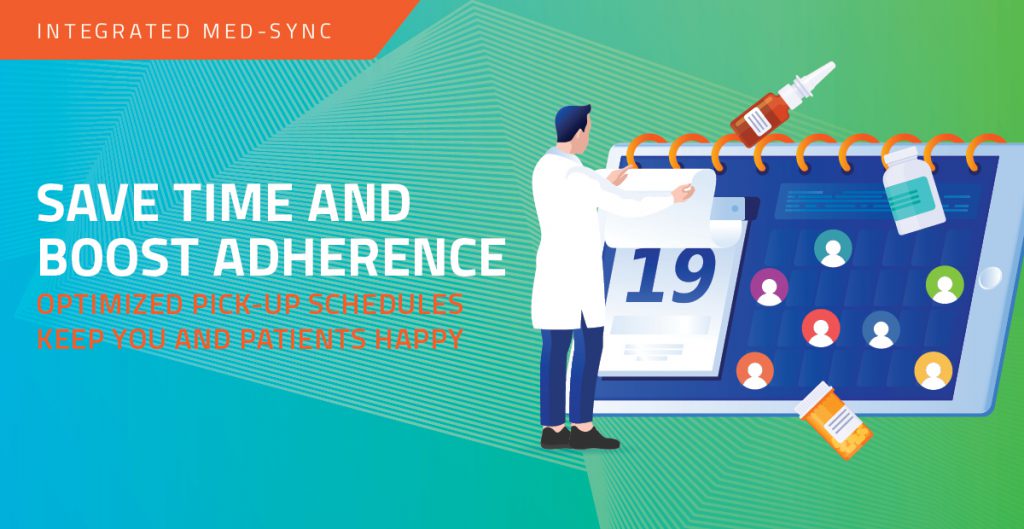
Your pharmacist is an important part of your healthcare team. Schedule your medication evaluation today with one of our staff.
Medication synchronization (med sync) allows patients to synchronize their medications in order to receive them on the same day, on a monthly basis, instead of making multiple visits to the pharmacy.
It is estimated that 21 percent of Americans use three or more medications and 10 percent take five or more medications. A study by Harvard Medical School found that when medications were not synchronized, patients had adherence rates that were 8.4% lower than patients for which medications were synchronized.
Poor medication adherence contributes to worse health outcomes and higher healthcare costs to individuals and the health care system as a whole. Non-adherence to medications accounts for 33% to 69% of medication-related hospital admissions and approximately 125,000 deaths annually in the United States. Poor medication adherence costs the U.S. healthcare system $290 billion annually – 13% of total healthcare expenditures.
How does Med Sync Work?
1. Pharmacists review the patient’s prescription list to formulate a plan for synchronization.
2. The pharmacist then performs partial or short fills to synchronize to the determined recurring date. When appropriate, the pharmacist also schedules an appointment with the patient each month to discuss medications, related side effects, and any other health-related issues.
3. Patient picks up all prescriptions in one visit with his or her pharmacist.
What are the Benefits of Med Sync?
It eliminates repeated trips to the pharmacy each month, saving patients time and transportation costs.
It minimizes confusion over when a prescription is due to be filled and allows an opportunity for patient education on medication use.
It reduces disruption of treatment through delayed or missed refills.
It allows for greater pharmacist oversight to address potential contraindications, duplicate drug therapy, and errors.
Starting January 1, 2014, Medicare Part D plan sponsors were required to implement med sync policies within their benefit
packages. In addition, 23 states have already enacted med sync laws.